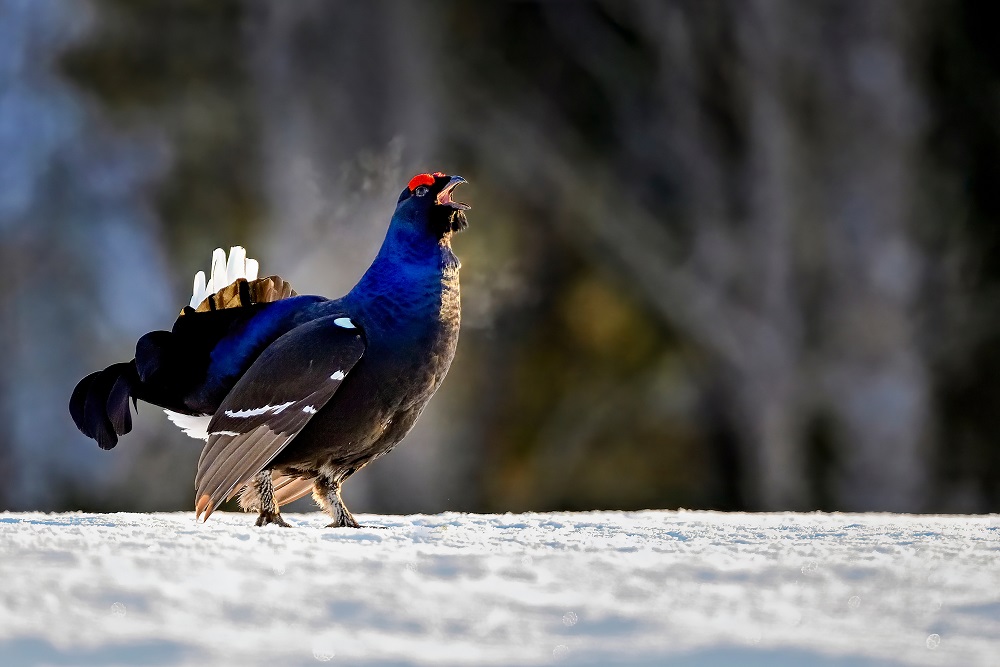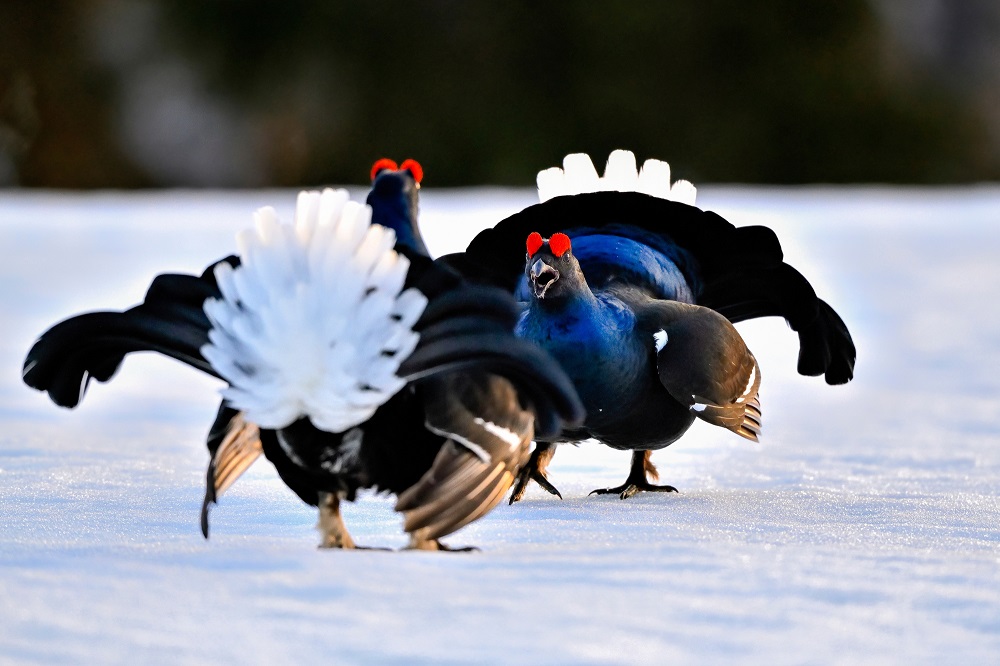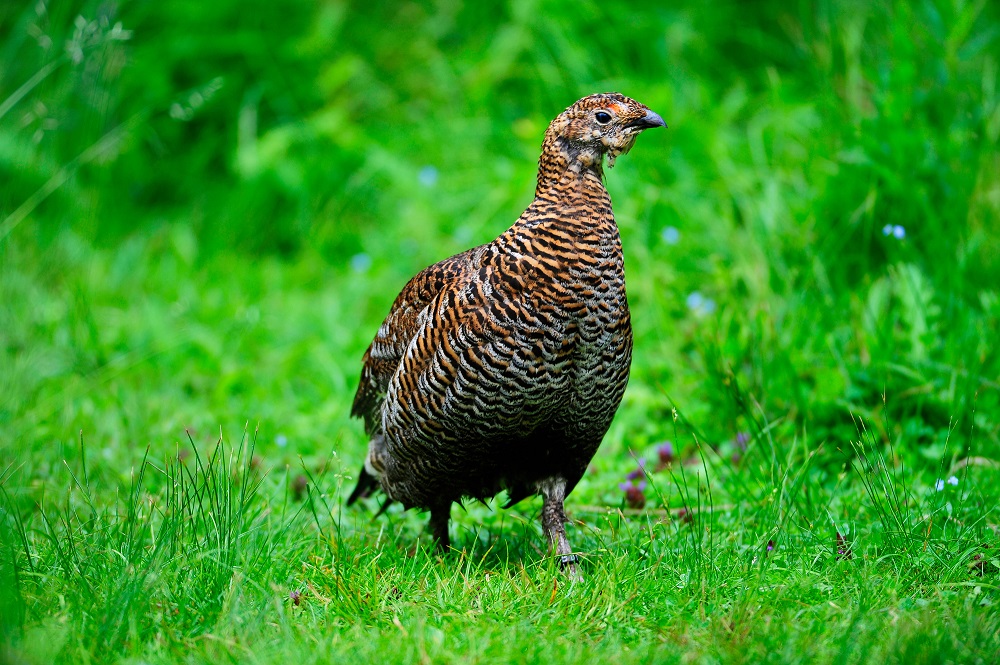In many Central European countries, the Black Grouse (Tetrao tetrix) was a common well-known bird. It was the emblem for the Black Forest and its moors as it was widespread in all moors in the year 1900. Since then, a lot happened and unfortunately the existence of the Black Grouse is declining continuously in those areas. An important reason for ZEISS to put the species back in focus.
The breeding areas disappear
The striking Black Grouse needs knee timber areas in high mountain regions or fringes of moors as breeding areas. It also uses forest areas after fires, windthrows or forests, which are destroyed by insects like the bark beetle. However less area is available starting in the 70s and 80s of the last century as moors are developed, the use of land is intensified, heaths are reforested, and the extraction of peat was industrialized. There was only a short time before when the Black Grouse used the areas with intensified use after deforestation. It also had an increased population in German areas, where the bark beetle was very active. Nevertheless, today it is gone in those areas. In Germany the Black Grouse has to use the last remaining knee timber areas in the Bavarian Alpes, heath areas in Northern Germany, some last remaining moors and former military training areas.
In Germany, the biggest avifaunistic organization counts all birds, sponsored by ZEISS. In the years between 2005 to 2009 only 850 to 1,400 breeding pairs were counted in Germany. Of those, 90 percent are in the Bavarian Alpes and a little group of 231 individuals is to be found in the heath areas in Northern Germany. In the long run their development in Germany is negative.


© Arto Hakola

Attitude phenomenon
In the morning dawn groups of male Black Grouse often come together in meadows, moors or frozen lakes for courtship. With the rising sun they disappear to the tree tops. Their vivid bird calls can be heard in a long distance. As diet they need buds of the birch, so their German name is “Birch Hen”. But they also eat buds and fruits of other trees as well as berries and plant shoots. Their chicks mainly eat insects.
Their habitats in Eurasia
In other European countries the Black Grouse finds better conditions, as long as they are not threatened by hunting as in some countries. According to estimations there are still between 2.5 and 3.2 million couples of Black Grouse between the British Islands, Scandinavia and Russia. Their habitats are endangered in very different ways. Up in the north of Scandinavia there are much better conditions and habitats for the Black Grouse. In order to save the population in Belgium there is a cooperation between nature conservation organizations like the WWF, the University of Liège and official authorities in Belgium with Sweden. In the regions Jämtland and Gävleborg in Sweden there are still many Black Grouses. Of those, 160 birds will be introduced to Belgium in the time period between 2018 and 2023. They shall be settled in the nature reserve Hautes-Fagnes in Belgium in order to secure the survival of the last Black Grouses in Belgium.
The project is successful so far and the population recovers. In the long run, however, the Black Grouse is only to be rescued by saving their habitats. In order to save important bird areas (IBAs) ZEISS supports BirdLife International and the German BirdLife organization for their work regarding the German areas. By putting the Black Grouse as the former emblem of the Black Forest back into the focus, ZEISS calls attention to the species and the importance of their habitats.